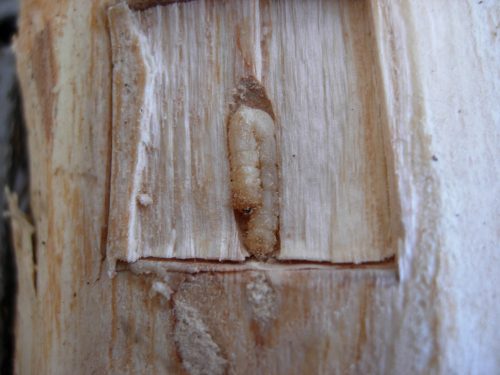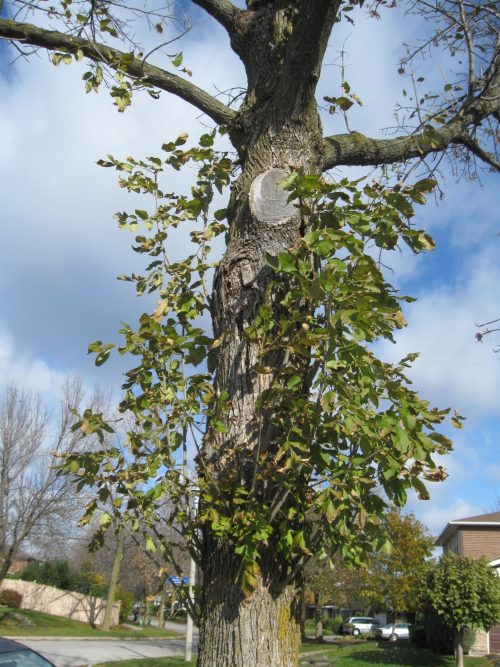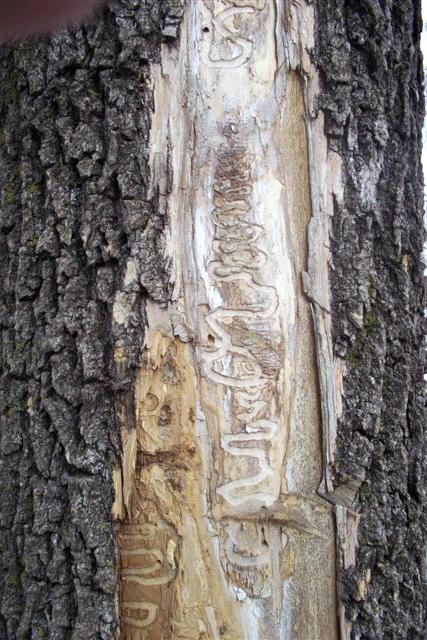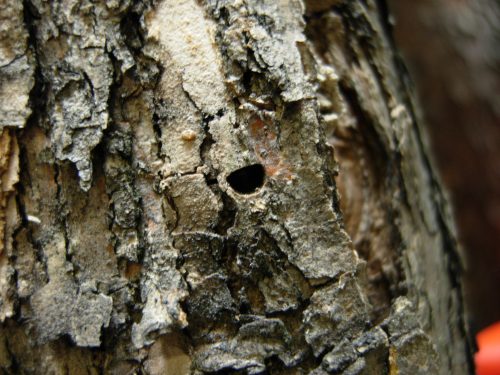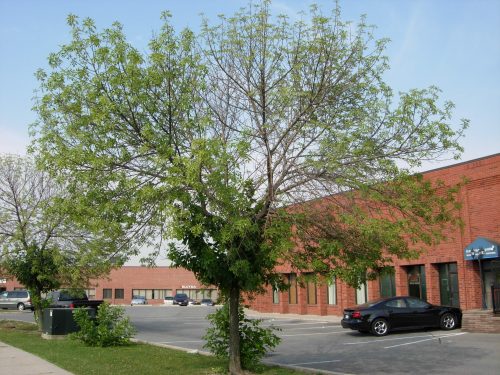
Visit our interactive map to see if an ash tree near you is planned for injection.
The Emerald Ash Borer (EAB) is an invasive beetle, not native to North America, that attacks and kills all species of true ash trees (Fraxinus sp.). It has been present in Toronto since 2007 and has killed more than 800,000 ash trees across the city. The most destructive stage of its lifecycle is caused during the larval stage, when the insect feeds under the bark and destroys the vascular tissue of the tree, leading to decline and death. While small to moderate populations of EAB may allow some ash to survive with minimal damage, some individual ash trees may also show resistance.
The City will be injecting over 5,300 City-owned ash trees from June to August 2025 with TreeAzin Systemic Insecticide to help protect them against Emerald Ash Borer. See the Public Notice of Pesticide Use for Control of Emerald Ash Borer.
While we aim to provide fully accessible content, there is no text alternative available for some of the content on this site. If you require alternate formats or need assistance understanding our maps, drawings, or any other content, please contact Karen Sun at 416-392-1891.
An Emerald Ash Borer Integrated Pest Management program is in effect.
Since 2011, the City of Toronto has been treating select, City-owned ash trees with TreeAzin Systemic Insecticide on a two-year rotation to control EAB populations and protect ash trees from this insect.
EAB will never be eradicated but populations may remain low, and some ash trees may continue to survive. Starting in 2025, TreeAzin Insecticide injections will be administered on a three-year rotation.
Injections of TreeAzin through the spring and summer target the larvae as they feed. TreeAzin is a growth inhibitor that blocks the molting process of EAB larvae so they cannot continue to grow.
TreeAzin (PCP# 30559) is a pesticide derived from the seeds of Neem trees that are native to India. The active ingredient is Azadirachtin. TreeAzin disrupts the normal molting and growth of insect larvae that feed on tree tissues, thus killing the insect.
TreeAzin is an effective way to protect ash trees from EAB if injected properly and in a timely manner. The pesticide provides protection against EAB for up to two years within the vascular tissue of ash trees. It is injected under a tree’s bark using small needle-like canisters by a licenced pesticide applicator. The product is absorbed rapidly between 15-30 minutes, after which the canisters will be removed.
TreeAzin is listed by the Organic Materials Review Institute (OMRI) for organic use and is allowed for use under Ontario’s cosmetic pesticide ban. The pesticide is registered by the Pest Management Regulatory Agency (PMRA) of Health Canada for EAB control in ash trees. Any health concerns can be directed to the Pest Management Information Service on the PMRA website.
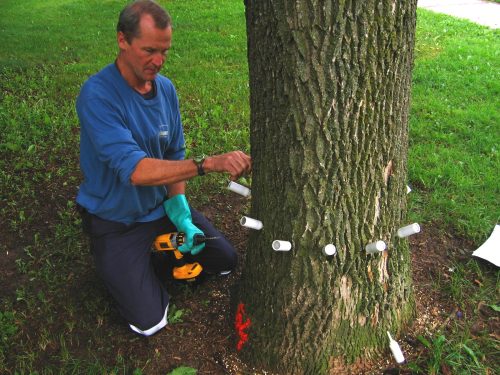
For City-owned ash trees on the road allowance in front of your property:
If your privately owned ash tree appears healthy, ask your arborist if your tree would benefit from TreeAzin® injections, which may slow down infestations of Emerald Ash Borer.
If you have an ash tree on your property and it is dead or dying, contact an arborist who is either:
If this tree requires removal and is over 30 cm in diameter, you may need to apply for a City tree permit before you can remove the tree.
The adult beetles lay eggs in bark crevices in late May to August and the emergent larvae tunnel into the outer stem of the tree, feeding underneath the bark. Larvae feed throughout the summer and overwinter. They pupate and emerge as adults between May and August.
As the EAB larval “grub” feeds under the bark it causes the greatest damage to the ash tree by harming the vascular tissue responsible for moving water and nutrients through the tree.
